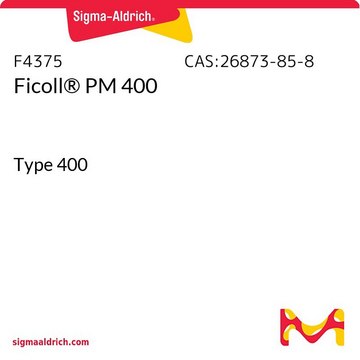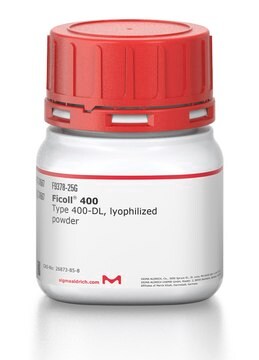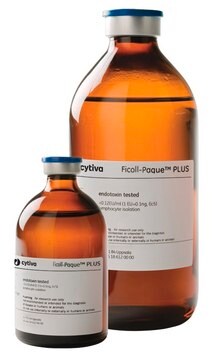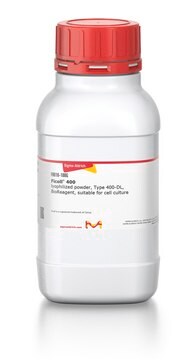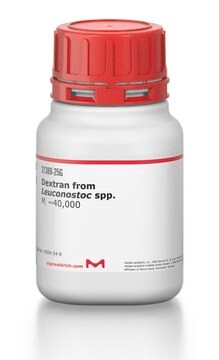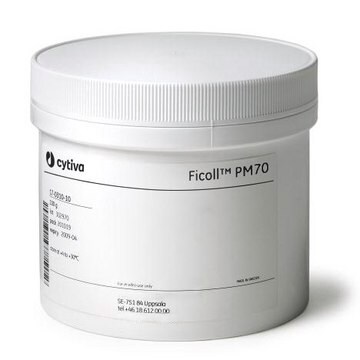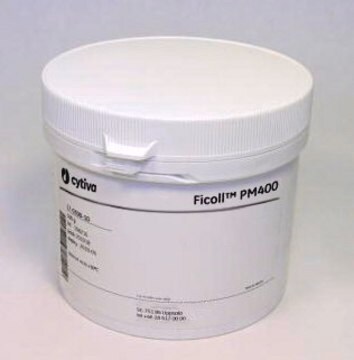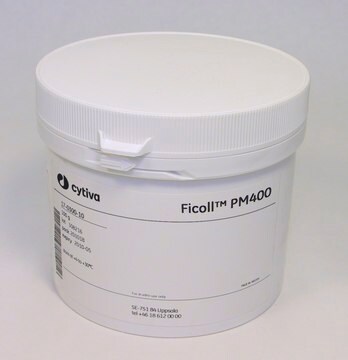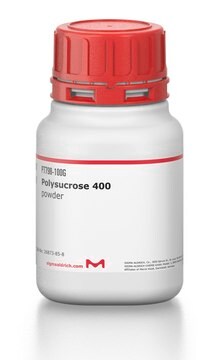F2878
Ficoll® PM 70
Type 70
Synonyme(s) :
Poly(sucrose-co-epichlorhydrin)
About This Item
Produits recommandés
Type
Type 70
Niveau de qualité
Forme
powder
Poids mol.
~70,000
Couleur
white
Solubilité
H2O: soluble 100 mg/mL, clear to slightly hazy, colorless to faintly yellow
Vous recherchez des produits similaires ? Visite Guide de comparaison des produits
Description générale
Application
- as a macromolecule in a comparative study to evaluate its effect in vitrification solutions
- as a supplement in the vitrification solution for the vitrification procedure of oocytes
- as a component of low serum medium for human lung fibroblast cell culture to promote a crowded environment
Actions biochimiques/physiologiques
Autres remarques
Informations légales
Code de la classe de stockage
11 - Combustible Solids
Classe de danger pour l'eau (WGK)
WGK 3
Point d'éclair (°F)
Not applicable
Point d'éclair (°C)
Not applicable
Équipement de protection individuelle
Eyeshields, Gloves, type N95 (US)
Certificats d'analyse (COA)
Recherchez un Certificats d'analyse (COA) en saisissant le numéro de lot du produit. Les numéros de lot figurent sur l'étiquette du produit après les mots "Lot" ou "Batch".
Déjà en possession de ce produit ?
Retrouvez la documentation relative aux produits que vous avez récemment achetés dans la Bibliothèque de documents.
Les clients ont également consulté
Notre équipe de scientifiques dispose d'une expérience dans tous les secteurs de la recherche, notamment en sciences de la vie, science des matériaux, synthèse chimique, chromatographie, analyse et dans de nombreux autres domaines..
Contacter notre Service technique